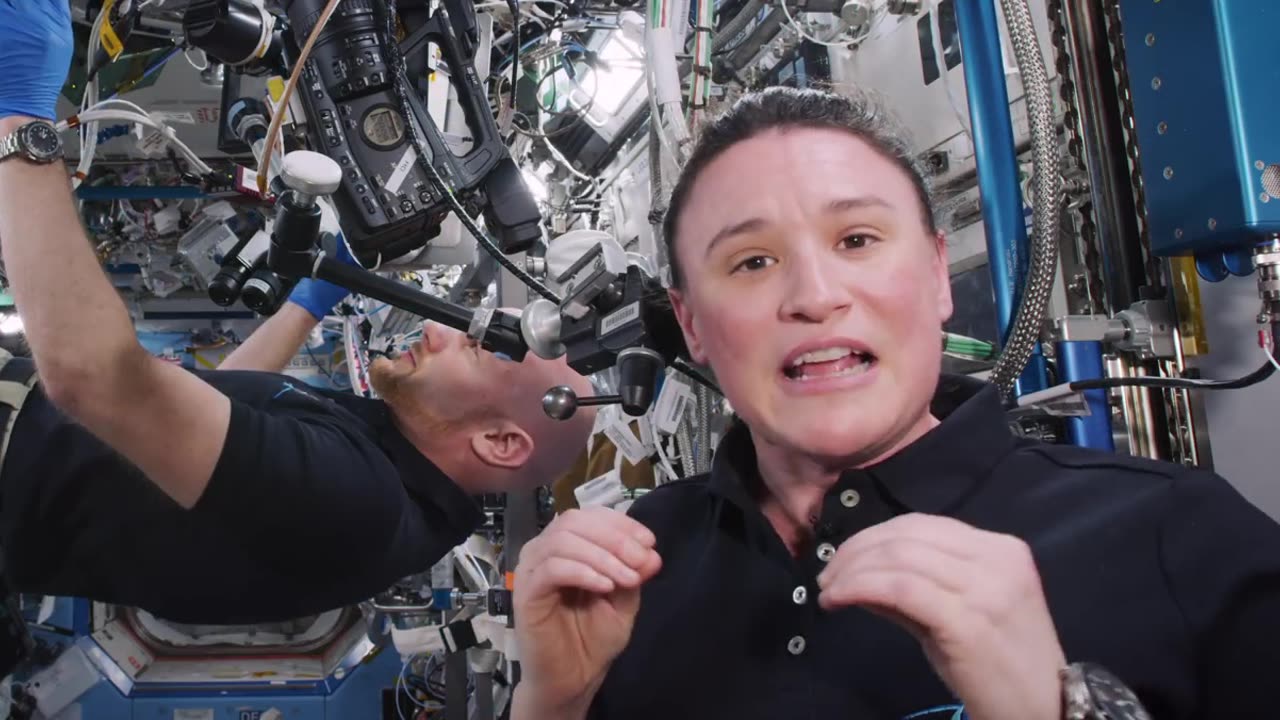Premium Only Content

Space-Grown Crystals Offer Clarity on Parkinson's Disease-4K-NASA OFFICAL
Parkinson's disease is a chronic neurodegenerative disease that affects more than 5 million people worldwide. It is characterized by the progressive loss of motor control, resulting in symptoms such as tremors, rigidity, and difficulty with balance and coordination. While there is currently no cure for Parkinson's disease, ongoing research seeks to better understand its underlying causes and find ways to treat and prevent it.
One avenue of research that holds promise in shedding light on Parkinson's disease is being conducted on the International Space Station (ISS). In a video narrated by NASA astronaut Serena Auñon-Chancellor and featuring European Space Agency (ESA) astronaut Alexander Gerst, we see the examination and photography of LRRK2 crystals.
LRRK2, or Leucine-Rich Repeat Kinase 2, is a protein associated with Parkinson's disease. Mutations in the LRRK2 gene are known to increase the risk of developing the disease. By growing LRRK2 crystals in the unique microgravity environment of the ISS, scientists hope to gain insights into the protein's structure and behavior that may not be possible to obtain on Earth.
Studying LRRK2 crystals in space could help researchers:
Observe Crystal Growth: Microgravity can allow for the growth of larger and more well-ordered crystals, making it easier to analyze their structure.
Understand Protein Function: By understanding the 3D structure of LRRK2, scientists can gain insights into how it functions in the body and how mutations may lead to Parkinson's disease.
Drug Development: This research may contribute to the development of drugs or therapies that target LRRK2, potentially offering new treatment options for Parkinson's disease.
The International Space Station provides a unique platform for conducting experiments that are not possible on Earth due to the absence of gravity-related disturbances. It allows scientists to study the fundamental processes of biology, chemistry, and physics in a novel environment, which can lead to breakthroughs in various fields, including medical research.
-
 2:00:37
2:00:37
Lara Logan
3 days agoINFORMATION WARFARE: Filmmaker Mike Smith on Media Propaganda & Hollywood’s Dark Agenda | Episode 27
7.09K23 -
 LIVE
LIVE
BEK TV
22 hours agoTrent Loos in the Morning 7/22/2025
437 watching -
 9:06
9:06
MattMorseTV
16 hours ago $0.54 earnedTrump wants to END THE FED.
1.57K9 -
 5:35
5:35
Rena Malik, M.D.
22 hours ago $0.03 earnedBotox for your Bladder?! | Everything you need to know about botox for overactive bladder
5.88K2 -
 7:14
7:14
DropItLikeItsScott
14 hours agoThe BEST Glock 17 Clone Available? Bear Creek Arsenal Grizzly
4.2K1 -
 LIVE
LIVE
IamNibz
4 hours agoDiony5usgaming Is So Forgiving- But We Ball!
92 watching -
 8:59
8:59
The Shannon Joy Show
13 hours ago🔥The Election Truth Is Being Deleted By Elon Musk’s Grok🔥
13K2 -
 LIVE
LIVE
TheBeardedBrent
1 hour ago🔴LIVE🔥 | FORTNITE BLITZ | CROWN CHASING!!! | ROAD TO 100 SUBS!!🔥
51 watching -
 LIVE
LIVE
PudgeTV
7 hours ago🟠 Rocket League & Witcher 3 Variety Stream | Gaming on Rumble is Waking Up
31 watching -
 9:35
9:35
Zoufry
17 hours agoThe Evil Design of The Slot Machine
6.79K4